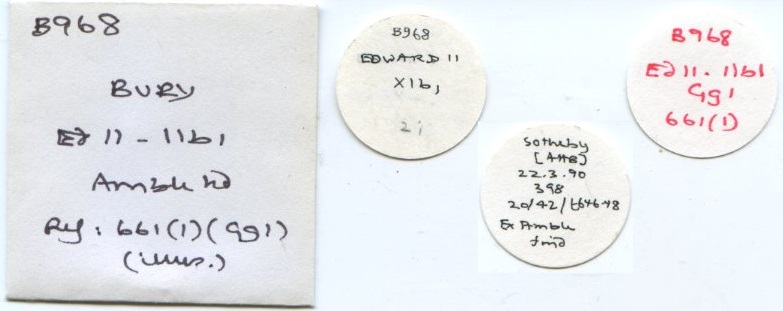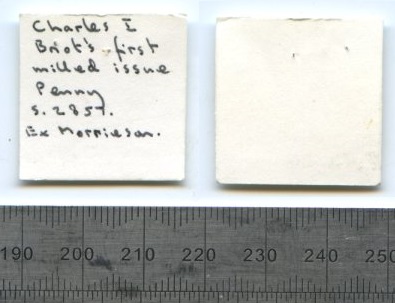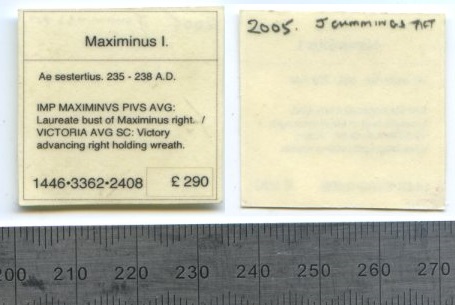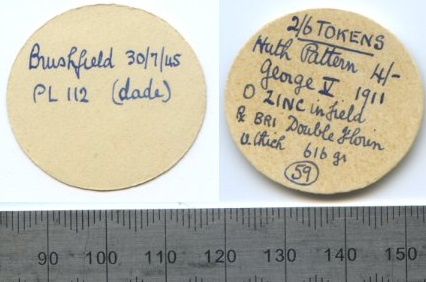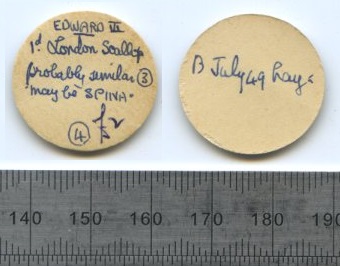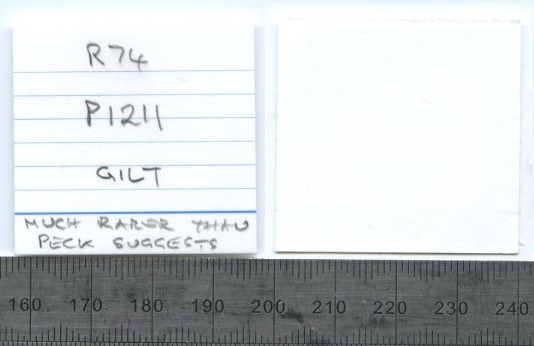-
Posts
12,739 -
Joined
-
Last visited
-
Days Won
339
Content Type
Profiles
Forums
Events
Downloads
Store
Gallery
Articles
Everything posted by Rob
-

Baldwins of St. James's 9
Rob replied to Rob's topic in British Coin Related Discussions & Enquiries
Useless statistic of the day. According to my phone I got through to them on the phone at the 22nd attempt after an hour trying. -

Baldwins of St. James's 9
Rob replied to Rob's topic in British Coin Related Discussions & Enquiries
Not sure. I think it may be that you have to register for each sale. I'm going to register tomorrow, just to see if it works (see how optimisitc I am? ). The point is that I had registered with them previously, so assumed that it would just be a case of registering for that sale just as you do with the Saleroom, but they kept things in suspended animation with the registration requiring approval, so I wouldn't bet on it working. I wouldn't mind, but they kept giving the message, this email address doesn't have an account, despite the fact I had logged in to the site using said address. -

Baldwins of St. James's 9
Rob replied to Rob's topic in British Coin Related Discussions & Enquiries
What I don't understand is why they don't have the bid button automatically updating. Sometimes it did, other times not. Baldwin's on their own used to manage it ok, St. James's on their own used to do ok too, so why the current mess? I had a dozen bids with bigger numbers than what the lots sold for. OK, some were lost due to registration issues, but not all. Basically, admin went awol. It shouldn't be beyond the wit of man to accept registrations promptly from people on their mailing list, and the person in charge of updating the bidding prices should be sacked forthwith. -
Has anyone had any joy with them today? From my perspective the whole setup is shambolic. It took an hour of phone calls and emails to get connected because they said I hadn't registered but their site said registration pending and I can bid when it has been accepted. Consequently missed out on the first 120 odd lots, some of which I had bids for. Tried to bid on the 1859 pattern decimal halfpenny and got to £950 with the next bid set at £980, but the auctioneer was asking for £1K which I would have bid, but the 980 was rejected and the coin knocked down, only for 1000 to flash up and equally fast disappear as the next lot was put up. Tried to bid on one of the farthing lots which was at 100, next bid was 110 but the screen was only asking for £10, so couldn't bid, then it went to 20, then it said next lot. Same thing happened on a couple of others. Consequently I have wasted a whole day getting nothing I needed or had commission bids forbecause they are completely inept. Someone had better put Stanley Gibbons into administration and let St. James's go back to as they were, because at least the auctions worked. Pissed off.......you bet.
-
The heart shape is just a normal wear pattern, but looking at a few images there does appear to be some detail differences in the hair arrangement around the shoulder and also on the drapery. There's a cheap project for someone if they want to take up the baton. The old head sixpences are common enough to buy in quantity.
-
EAGLEN, R J Collection of Edwardian Sterlings sold through DNW in 2017. Each coin came with his 2x2 envelope, and tickets 25mm dia, one giving coin details and provenance, and a second with the references pertaining to his book on the Bury St. Edmunds mint.
-
In terms of storage, a mahogany cabinet might seem expensive to start with, but they are always desirable and as such an asset that you will have little difficulty in recouping your cost. It's worth thinking about.
-
I don't know if you can. Are you in Chile as this is the only place that has changed in the past week unless you are in Morocco which changed in July?
-
STUDIO COINS (Stephen Mitchell) White tickets 29 or 30mm diameter written on one side only. The red line with the monarch above is similar in appearance to those of Dupree.
-
I guess that numismatic slabbing is the equivalent of sciences and the arts in academia. In theory, milled coinage slabbing should just be a straight forward measurement of wear, whereas a hammered coin can be as struck, but flat, or in the case of some of the heavy chunky ancients, have good detail but be relatively low grade, i.e. they are the arts side where the number on the slab is irrelevant, and as always in the arts, beauty in the eye of the beholder. I still stick by my two point grading scale.
-
That last seems overly generous. I've not seen many 60s that warrant better than EF. Uncs are rarely less than 64 and even 65s are often hopelssly optimistic. The bank token I got rid of on account of wear to the laurel, yet got slabbed 66 springs to mind too. We are in danger of having a complete generation with rose-tinted spectacles when it comes to grading. The alternative is to extend the Sheldon scale to encompass the things that are better than 'uncirculated'.There has been a large amount of upwards grade drift over the past generation.
-
Should be A(lmost) U(nreadable) 15ish. There's no way that 50% of the legend is illegible.
-
PARSONS, H A Two collections, the first sold at Sotheby 28th October 1929, the second at Glendining 11th May 1954. Tickets are 1" or slightly less with minimal information.
-
FARQUHAR, H L Helen Farquhar, a collector of mainly Charles I material, the collection sold at Glendining on 25th April 1955. Tickets 29 or 37mm with scruffy handwriting.
-
I won the first of the Irish gunmoney crowns, lot 1279. The estimate was a low 100-150, but of the two main protagonists that have pushed up Irish prices in the past few years, one has gone through a divorce, so coins must be sold and it's doubles all round. £220 hammer was a bargain.
-
-
JOYNER, J T Collection of hammered from early Anglo-Saxon through to Stuart sold by DNW on 4th December 2013. White card.
-
COMBER, C Chris Comber is a specialist in Tudor Coinage and a co-author of the standard Elizabeth I reference. The ticket has obviously been trimmed to fit into a tray hole.
-
-
LINGFORD, H M H M Lingford d.1950, a huge collection, much of which was acquired from Baldwin and who puchased the collection post-mortem. Tickets of various size but all the same basic layout.
-
Looks like it.
-
-
-
BOYD, W C Collection sold at Baldwin, 26/9/2005, having lain undisturbed for 99 years.The catalogue includes pictures of a number of tickets written by Boyd in the introduction. Assuming they are to scale, diameters are 1" for the small ones, and 1.5" for the large.


